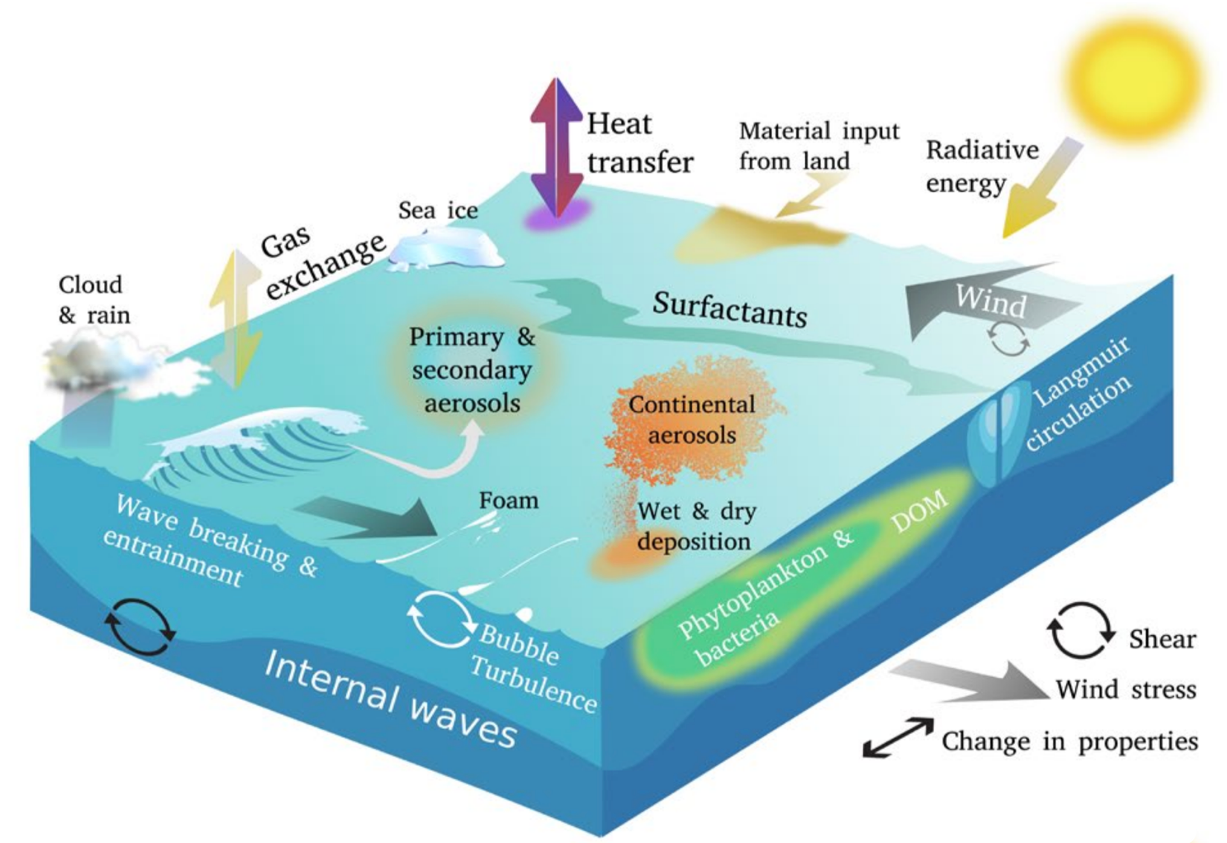Institute of Ocean-Atmosphere Interaction and Climate Change (IOIC) is comprised of 1 Professor, 4 lectures, 2 post-doctors and several graduate students. IOIC aims to understand various ocean-atmosphere coupling processes and their role in mean-state climate, climate variability and climate change by both diagnostic and modeling methods based on the observations, reanalysis datasets and numerical models. IOIC is committed to widen our understanding in climate system and hence well predict and project the variability and future change of global and regional climates, respectively.

Fig.1 IOIC members and their research interests.
The ocean and atmosphere interact in many ways, including the exchange of water, salt, gases, heat and momentum, feedback between the oceanic and atmospheric processes, etc. The ocean covers more than 70% of the earth’s surface and plays a key role in global heat balance, hydrological cycle and carbon cycle. The atmosphere can drive ocean mixing, convection, waves and currents and upwelling/dowelling. Besides, the ocean and atmosphere modulate the thermal conditions of each other through changes in surface wind, cloud, evaporation and precipitation, etc.

Fig. 2 Schematic of ocean-atmosphere interaction processes (Neukermans et al., 2018)
The ocean and atmosphere are coupled in many weather/climate phenomena, their interactions are important for the economy, coastal engineering, agriculture activities, tourism, and human safety and health. El Niño and Southern Oscillation (ENSO) is important for the weather and climate of China, like causing the flooding, drought and heat waves. ENSO is a direct result of ocean-atmosphere interactions and acts as the most striking climate mode at inter-annual time scale. Global warming appears to be the most serious issue, which also involves complicated ocean-atmosphere coupling processes, faced by human community for generations due to the rise in greenhouse gases. The enhanced greenhouse effect largely increases the heat reserved in the climate system from pre-industrial level, with more than 90% of the extra heat entering into the ocean and causing sea-level rise, rapid ocean warming, more frequent extreme events, etc.
Currently, IOIC’s research centers on ocean-atmosphere interactions and their role in climate, such as global warming and associated global and regional climate change, climate model biases and uncertainty, future monsoon changes, ocean response to global warming, the role of ocean in climate change, climate changes under 1.5°C and 2.0°C low warming targets, ENSO and its effects on East Asia climate, Yangtze river summer rainfall and extreme events, mid- and high-latitudes atmospheric circulation, ocean-land-atmosphere interaction, paleoclimate, global hydrological cycle, etc. IOIC members have published a large number of papers on international recognized top-class academic journals like Nature Climate Change, Journal of Climate, Climate Dynamics, Geophysical Research Letters, Journal of Geophysical Research. Specially, one publication of Professor Li is ranked as global hot paper (top 1‰) and highly cited paper (top 1%) by web of science and is cited by the IPCC AR5 report.
IOIC has received research foundations from the key project of national science foundation of China (NSFC), outstanding youth project of Guangdong science foundation, youth project of NSFC and Jiangsu science foundation, general program of China postdoctoral science foundation, open project of National key laboratory, etc. The courses given by IOIC members including Earth Fluid Mechanics I, Earth Fluid Mechanics II, Introduction to Ocean General Circulation, Regional Oceanography, Introduction to Atmospheric Science, Principles of Weather, Practice for Principles of Weather, Scientific literature reading and review.



